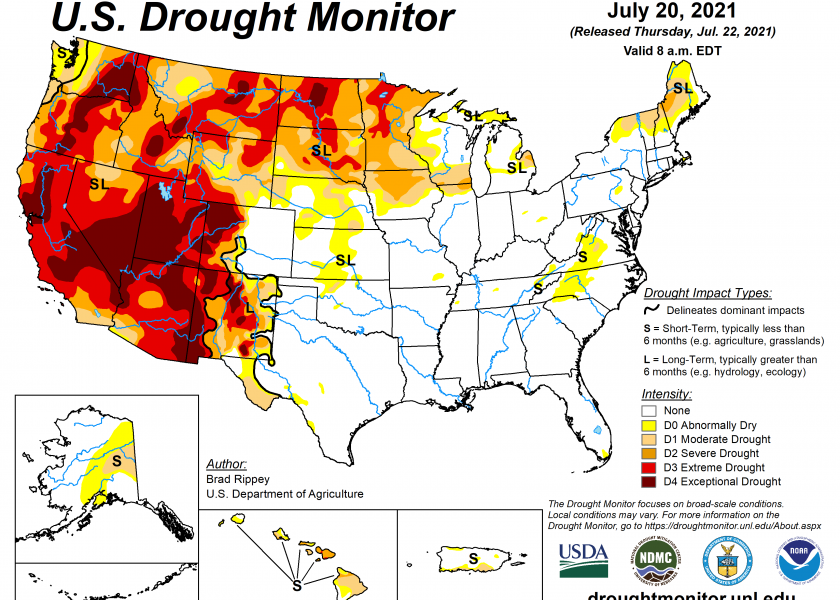National Drought Monitor: More Of The Same

Monsoonal rains are helping Arizona and New Mexico, but heat and dryness are causing massive degradations in the Northwest and northern Rockies, especially in Washington, Idaho, Montana, and Wyoming, according to this week’s National Drought Monitor.
Little or no rain fell in California, the Great Basin, and the Northwest, where dozens of wildfires were in various stages of containment. Smoke and other particulate matter from those fires carried downwind at various atmospheric levels, producing hazy skies and reducing air quality—in some cases thousands of miles from the points of origin.
Dry weather extended eastward across the nation’s northern tier as far east as Lake Superior, while heavy rain eased or eradicated drought in the remainder of the Great Lakes region, along with the Northeast.
In the driest areas of the northern and western United States, drought’s impact on water supplies, as well as rangeland, pastures, and a variety of crops, was further amplified by ongoing heat. Weekly temperatures averaged as much as 10°F above normal from the interior Northwest to the northern High Plains. On July 19, temperatures as high as 110°F were reported in eastern Montana. Another pocket of hot weather was centered over the middle Atlantic States. In contrast, near- or slightly below-normal temperatures dominated the Plains, Midwest, and South.
This week’s data show the highest percentage of the U.S. is in an extreme/exceptional drought since the data series began in 2000.







